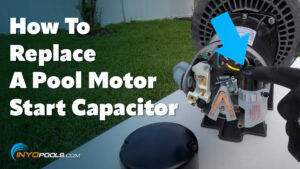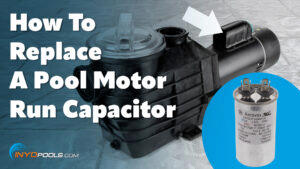Short Answer: No
The Long Answer:
What is it?
An impeller lock screw is a left handed thread screw used to secure an impeller to the shaft of a motor. When it was introduced, it was a vital part and the only thing keeping your impeller from a Tasmanian Devil-like path of destruction through the inside your pump.
Why don’t I need it?
Impeller lock screws have been slowly phased out of pump designs due to the industry wide switch to external thread motor shafts. The new design of motor shafts allows the stem of the impeller to thread onto the shaft. The reverse thread of the impeller stem means as the motor turns it is constantly tightening the impeller.
Old motors had an internal thread shaft tip without an external thread making the lock screw absolutely necessary. The new impeller and shaft design have left the screw in a state of obsolescence not seen since we stopped using answering machines or Service Merchandise.
Most pool owners do not realize the screw exists until the pump is back together and there is a leftover screw rolling on the ground. Leftover parts that serve no real purpose in the effectiveness of the design other than to confuse the builder after construction is complete is something we call the IKEA effect.
Are you sure I don’t need it?
Ok, there is only one instance in which the lock screw would still be necessary but the manufacturer states the chances of this are so remote they normally do not bring it up.
And I quote directly from the manufacturer, “the locking screw left over after an existing permanent split capacitor (PSC) pool or spa motor with an internally threaded shaft is replaced with a capacitor start motor without the internal shaft threading. Once the impeller is tightened onto the shaft of the new motor, the locking screw cannot be reinstalled. This situation naturally causes concern for some pool service professionals who question whether or not the impeller might somehow spin free. “
If you are still reading this then I congratulate you on being the foremost expert on impeller lock screws on your block. If your lock screw curiosity has not been cured or there is a different pool problem irking you, please give us us a call at 877-372-6038. We love to help!













Leave a Reply